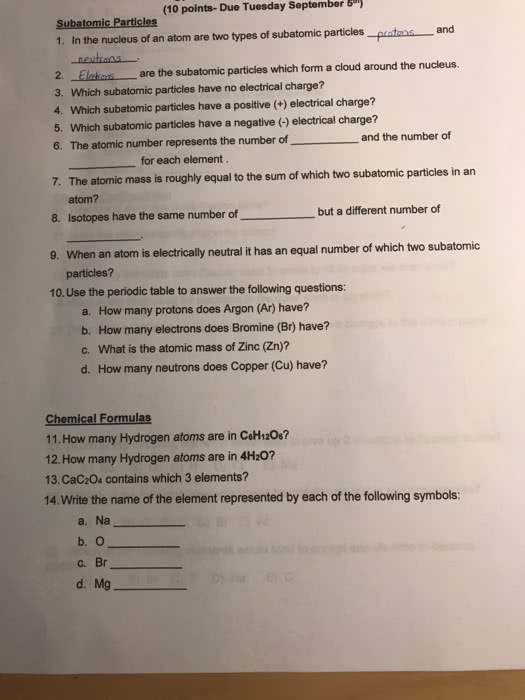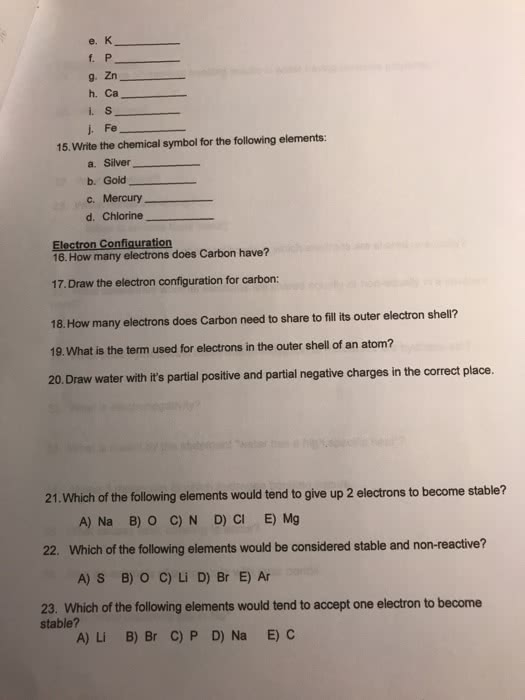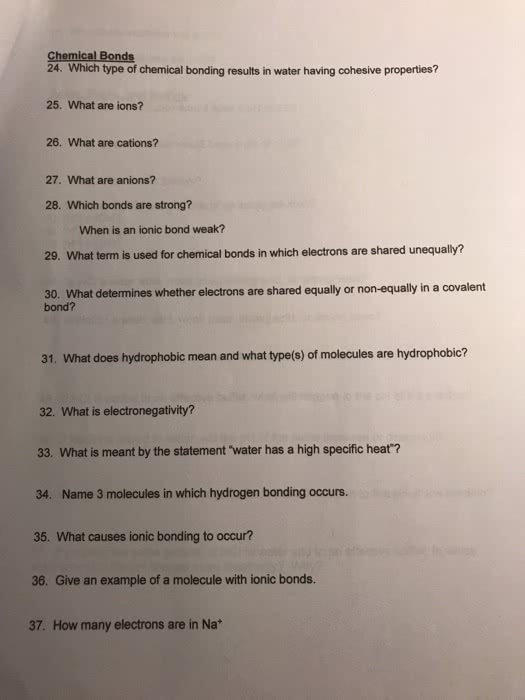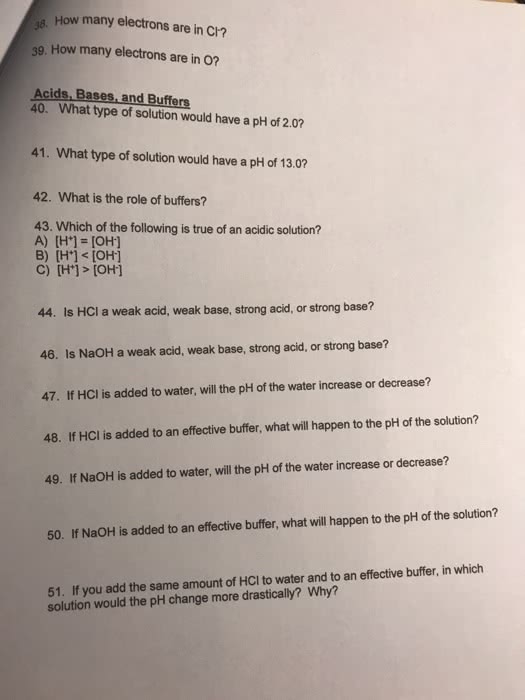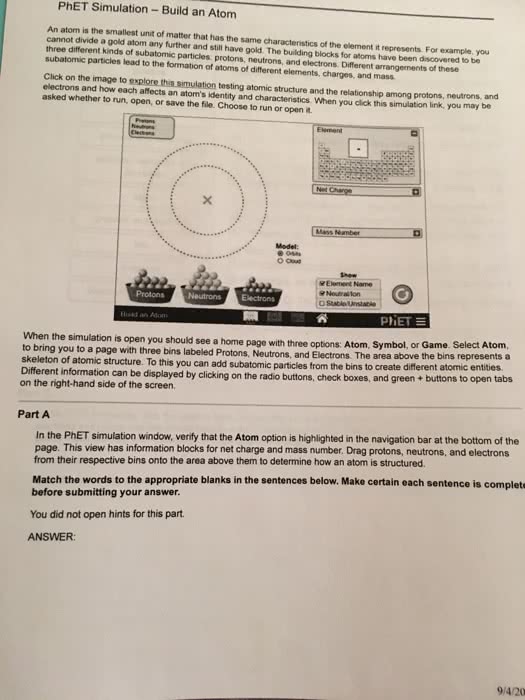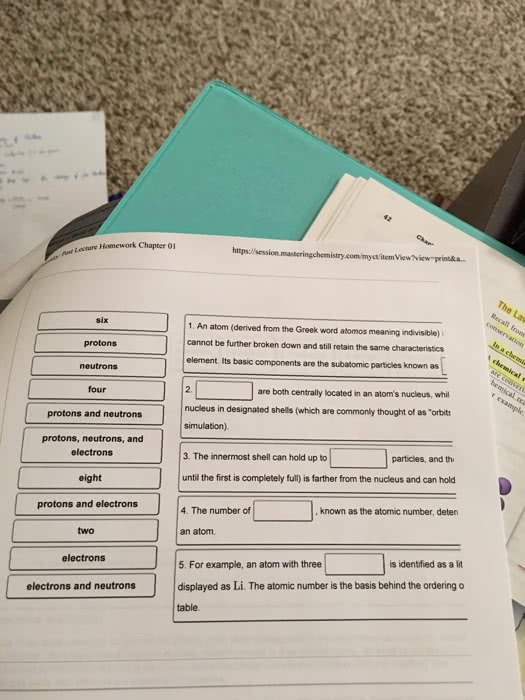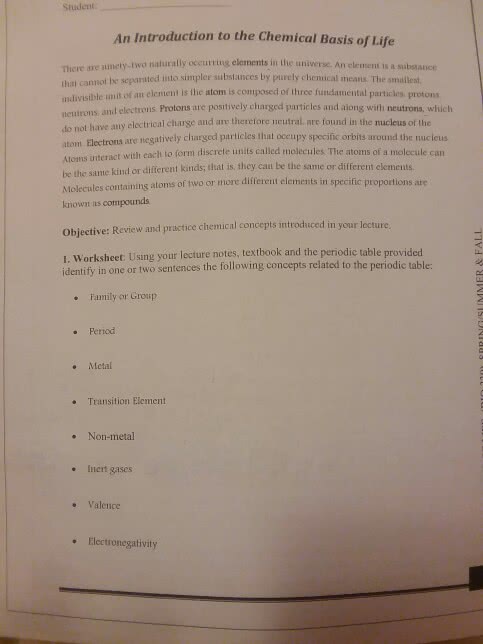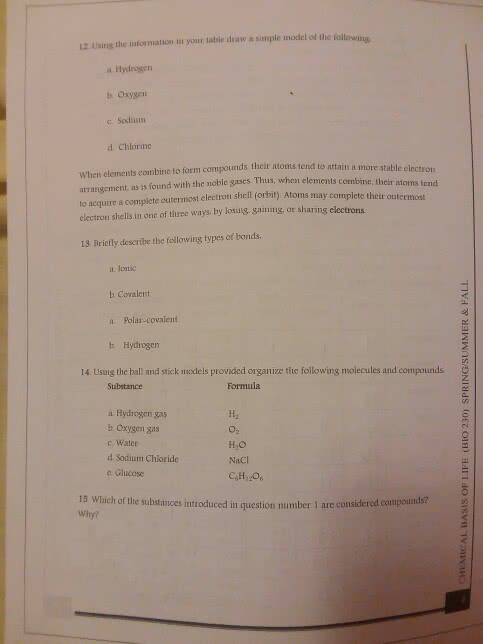CHEM1011 Lecture Notes - Lecture 2: Alkaline Earth Metal, Beryllium, Sodium-Vapor Lamp

TOPIC 2.
THE STRUCTURE OF ATOMS
What distinguishes atoms of different elements?
An atom of any element is the smallest particle that still retains the properties of that
element. The mass of a single atom of an element is in the range 10−24 g to 10–21 g,
depending upon the element chosen. As noted in Topic 1, each element has its own
distinct type of atom, and what causes each type of atom to have its unique properties
will now be considered.
Sub-atomic particles.
While the atom is the smallest unit of any element, atoms themselves consist of
smaller particles. All atoms are found to contain three basic particles, viz.
PROTONS, ELECTRONS and NEUTRONS. Protons have a positive electrical
charge, electrons have a negative charge of identical magnitude to the proton, and
neutrons carry no charge. The mass of a proton is slightly less than that of the neutron,
while the mass of the electron is negligible compared with the proton mass. The
following table gives the relative charge and mass for each particle.
Particle Name Mass Relative mass Relative
Charge
proton 1.673 × 10–24 g 1 +1
electron 1/1836 × proton mass
= 0.0009 × 10–24 g 1/1836 −1
neutron 1.675 × 10–24 g 1 0
Structure of atoms.
All atoms have the same structure consisting of a very small NUCLEUS of radius
about 10–14 m which contains all the protons and neutrons. The number of electrons is
numerically equal to the number of protons and the electrons are in constant motion in
the region of space outside the nucleus. The radius of an electron is less than 10–14 m
and, depending on the element involved, the average atom's radius is about 10–8 m.
From these figures, it can be seen that the volume of the atom is mostly made up of
empty space.
The number of protons in the nucleus of an atom of a given element is called the
ATOMIC NUMBER of that element. Each element has its own unique atomic
number. For example, the smallest atom is that of hydrogen which contains just 1
proton in its nucleus and 1 electron outside the nucleus. The next largest atom is that
II - 1
find more resources at oneclass.com
find more resources at oneclass.com

II - 2
of helium, atomic number = 2, which has two protons in its nucleus and 2 electrons
outside the nucleus.
It is the number of protons in the nucleus (the atomic number) that determines
which element the atom represents.
The following table lists the first 20 elements in atomic number order. (There is no
value in memorising this table.)
ATOMIC NUMBER NAME ATOMIC NUMBER NAME
1
2
3
4
5
6
7
8
9
10
hydrogen
helium
lithium
beryllium
boron
carbon
nitrogen
oxygen
fluorine
neon
11
12
13
14
15
16
17
18
19
20
sodium
magnesium
aluminium
silicon
phosphorus
sulfur
chlorine
argon
potassium
calcium
The nucleus.
The nuclei of all atoms except those of hydrogen contain neutrons as well as protons,
in about equal numbers. The role of neutrons is to provide stability to the nucleus of
the atom. Most elements have atoms with varying numbers of neutrons present and
each variation represents a particular ISOTOPE of that element. For example, carbon
atoms always have 6 protons and most also have 6 neutrons in their nuclei, but about
1% of all carbon atoms occur as another isotope which has the required 6 protons (the
characteristic which determines that they are atoms of carbon) and 7 neutrons.
The number of (neutrons + protons) in the nucleus of a given atom is called its MASS
NUMBER. Sometimes it is useful to indicate the nuclear composition of a given atom
by using the following notation:
z
aX where a = mass number = (number of protons + neutrons)
and z = atomic number = number of protons.
From this notation, the number of neutrons present in the nucleus of a given atom = (a
− z). By this method, any specific nucleus type or NUCLIDE can be represented.
The number of neutrons present in the nucleus does not influence the chemical
properties of the atoms, and the various isotopes of a given element behave identically
find more resources at oneclass.com
find more resources at oneclass.com

II - 3
in all chemical reactions. When an isotope has significantly more or less neutrons than
the number of protons in its nucleus, it is usually unstable and undergoes a
NUCLEAR DECAY spontaneously over a period of time. Unstable nuclei are called
RADIOACTIVE species.
Hydrogen has 3 isotopes which contain (1 proton + 0 neutrons), (1 proton + 1 neutron)
or (1 proton + 2 neutrons) respectively. Almost all hydrogen atoms are of the first
isotopic form. The second isotope, often called "deuterium" and given the special
symbol D, is present to the extent of 0.015% of all naturally occurring hydrogen nuclei,
while the third isotope ("tritium", T) is unstable and does not occur naturally, being
formed in nuclear reactions. These three isotopes of hydrogen can be represented as
1
1H , 2
1H and 3
1H respectively or alternatively as 1
1H , 2
1D and 3
1T.
It is a fundamental law of electrostatics that like electrical charges repel each other
while opposite charges attract. Further, these forces are proportional to 1/(d2), where d
is the distance separating the charges. As the protons are extremely close to each other
in the nucleus and they all carry a +1 electrical charge, the electrostatic repulsion
between protons must be very strong and so there must be some other force operating
to overcome this repulsion in order to hold the nucleus together. This NUCLEAR
FORCE is one which operates only at very close distances and is much stronger than
the more familiar electrostatic force. The nuclear force operating between protons,
between neutrons and between protons and neutrons is the reason why the nucleus is
stable provided there is an appropriate ratio of protons to neutrons. It is a nuclear force
and is not experienced by electrons.
Electrons.
As atoms are electrically neutral and the charge on the electron is equal but opposite to
that on the proton, there must be identical numbers of electrons and protons in any
atom. The electrons are envisaged as being in rapid motion distributed around the
nucleus, but never actually being within the nucleus. Now the normal laws of
electrostatics would require the electrons to collapse into the nucleus due to the
attraction of the protons. Because this does not happen, there must be other laws
which govern the behaviour of electrons in atoms. Models to explain this will be
presented later in the year as part of all first year chemistry courses, but the results of
certain experimental evidence presented here is independent of those models.
Experiments show that the electrons occupy only certain ORBITS around the nucleus,
each orbit being characterised by its own associated energy and average distance from
the nucleus. This model of an atom was proposed by Neils Bohr in 1919. In this
model the orbits are grouped into ENERGY LEVELS or SHELLS and numbered 1,
2, 3,... outwards from the nucleus. The number of orbits available is strictly limited.
Electrons occupying orbits closest to the nucleus have the lowest energy while
find more resources at oneclass.com
find more resources at oneclass.com
Document Summary
An atom of any element is the smallest particle that still retains the properties of that element. The mass of a single atom of an element is in the range 10 24 g to 10 21 g, depending upon the element chosen. As noted in topic 1, each element has its own distinct type of atom, and what causes each type of atom to have its unique properties will now be considered. While the atom is the smallest unit of any element, atoms themselves consist of smaller particles. All atoms are found to contain three basic particles, viz. Protons have a positive electrical charge, electrons have a negative charge of identical magnitude to the proton, and neutrons carry no charge. The mass of a proton is slightly less than that of the neutron, while the mass of the electron is negligible compared with the proton mass. The following table gives the relative charge and mass for each particle.


